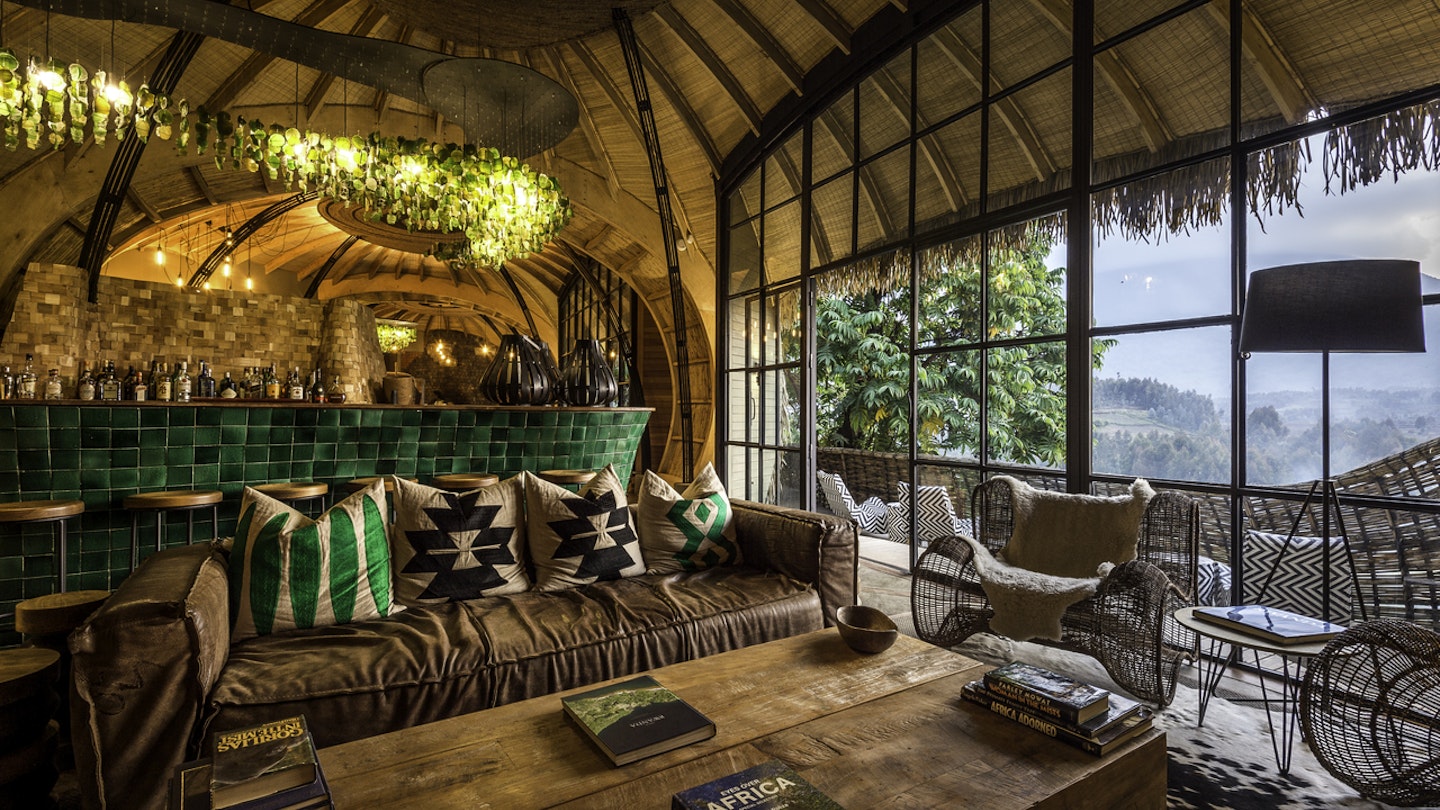
For decades, safari hotel design has been dominated by colonial tropes. Thankfully, that’s starting to change.
As I warmed up by a roaring fire in the lounge of the Asilia Naboisho Camp after a sunset game drive, my eyes were drawn to the massive, beaded centerpiece above the mantle. I immediately recalled what my Maasai guide had shared earlier about the impressive wall decor. It is influenced by Enkarewa, a traditional handmade wedding necklace worn by brides in the communities surrounding the Maasai Mara conservancy. The vibrant colors and design symbolize the alliance between families and the unity of the community. This particular piece was made by female artists supported by a local nonprofit.
A Shifting Aesthetic
The choice to display such artistic elements may seem obvious, yet it is a relatively recent occurrence, part of an encouraging trend among newer and renovated lodges and camps throughout East and Southern Africa.
Over the last decade, an interior design renaissance has taken flight across Kenya, Tanzania, Rwanda, Namibia, Botswana, Mozambique, Zimbabwe, and South Africa. Luxury properties are moving away from an “Out of Africa”-influenced colonial theme and are embracing a modern aesthetic that celebrates the region’s people, cultural expressions, and natural surroundings. This change not only uplifts communities but also aids conservation efforts and empowers artists, particularly women.

Gone are the vintage trunks and pith helmets glamorizing a painful, bygone era. Instead, contemporary spaces are adorned with the brilliant artistry, colors, and themes of their respective regions. Guests can discover intricate beadwork, woven baskets, hand-tooled wooden utensils, and art galleries showcasing Africa’s emerging artists and architectural elements reflecting the area’s natural beauty.
Caline Williams-Wynn, a South African-based interior designer behind many sought-after safari properties, stated, “If you just use a classic interpretation of Africa, it doesn’t tell the story of the area.” She emphasizes the importance of immersing guests in the culture of the country and its people.
The Beginnings of the Shift
This shift, according to Cape Town-based public relations consultant Mercedes Bailey, began at safari properties in South Africa and migrated north, notably to Botswana. The impetus for this change was competition. “As more properties opened in prime safari areas like the Sabi Sands and Okavango Delta, they needed to differentiate themselves; one way was through modern and cutting-edge design,” Bailey said.
Properties now collaborate with African designers, artists, and artisans, showcasing creativity and allowing the stunning environment to speak for itself. Singita’s Lebombo Lodge, built in Kruger National Park in 2003, is an early example with organic structures filled with natural light, inspired by eagles’ nests built into the riverbank.

Singita operates 15 lodges across four regions, showcasing contemporary design that celebrates regional culture. In 2020, Singita completely renovated its Sabora Tented Camp in the Serengeti, abandoning its former colonial theme for a serene oasis reflecting the grasslands and featuring local beadwork and pottery.
Allowing Regional Culture to Shine
Rwanda’s lodges, developed post-genocide, embraced cultural celebration early on. Rwandan fashion designer Teta Isibo collaborated on the Wilderness Bisate Rwanda Day Lounge near Volcanoes National Park, emphasizing the unique identity of Rwanda.

Isibo highlighted that every detail at Bisate, from the architecture to textiles, celebrates Rwandan culture. The goal was to merge artisans’ work with trending designs, crafting elements that are distinctly Rwandan.

One&Only Nyungwe House, located in southwest Rwanda near Nyungwe National Park, enhances cultural revival by offering Imigongo lessons for guests. This significant Rwandan art form utilizes natural soils and organic materials to create vibrant colors reflecting the earth’s hues.
Guests not only learn about this ancient art form but also take home a piece of history and culture with their own artwork. “We encourage our guests to learn about the destination and experience the country through a local’s lens,” mentioned a guest experience supervisor.

Where Art Inspires Conservation
The emerging design principles across the continent stem from the belief that art can enrich a safari experience and aid conservation efforts. Wildlife viewing in Africa is transformative, often fueling a desire to protect endangered species.
The new Bisate day lounge features photographs of individuals from nearby villages, acknowledging those involved in conservation efforts of the mountain gorilla. Such installations create opportunities to learn their stories and understand the importance of conservation.
In collaboration with Ardmore Ceramics Design, Singita has opened contemporary African art galleries in Singita Sabi Sand and Singita Kruger National Park, launching an Artist in Residency program aimed at showcasing Africa’s beauty and raising funds for conservation efforts.

This evolution of safari design—from a whitewashed fantasy to a celebration of local art—benefits communities significantly. By employing regional artists and sourcing materials locally rather than importing, safari companies reduce their environmental footprint and demonstrate their commitment to the region.

With high-end safari companies now investing in unique designs, local artisans are recognizing the value of their products. Many local artists benefit from the opportunity to showcase their work in safari lodges, with companies like Azizi Life supporting artisans to enhance their livelihoods.
After my experience at Naboisho Camp, I visited a local nonprofit that empowers women through small business startups, such as beadwork projects. Their products reach clients at various camps and ethical shops worldwide, generating sustainable income and improving local livelihoods.
Before leaving, I chose to purchase handmade jewelry and a woven blanket, embodying the creative expressions of local artisans. It’s a meaningful piece of art that connects me to the rich experiences throughout Africa, from the Maasai Mara to the gorilla trek in Rwanda. Though challenges remain, travelers now have the chance to engage with a narrative that reflects the region’s people and their stories, rather than its colonial past.




